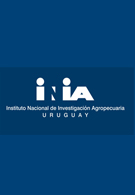ABSTRACT.- Protists are one of the most diverse major eukaryotes in the soil ecosystems and play essential functional roles in shaping the microbial community structure, soil nutrient cycling, and crop productivity. However, protist community composition in soils is poorly understood, notably in paddy field soils with alternating oxic and anoxic phases and when under rotation with other crops and pastures. Furthermore, current knowledge about South American soils' protist communities is limited. Using a long-term experiment and high-throughput sequencing, this study aimed to characterize how rice rotations with crops and pastures affect protist communities. The results showed that Chlorophyta (48.4 %) were the most abundant taxonomic group of protists in paddy soils, followed by Cercozoa (37.7 %) and Tubulinea (2.4 %). Chlorophytes varied in abundance from rotation with rice each year (4.3 %) to rice after a long pasture (1.3 %). Among protist functional groups, autotrophs were the most dominant (49.2 %), followed by consumers (decomposers and predators, 47.7 %). Phototrophs dominated rotations with rice as the antecessor crop, and consumers dominated rice after a long pasture. Pathogens (animal parasites and plant pathogens, 3.1 %) were more abundant in rotations with more crops than pastures. Certain species were identified as biomarker taxa for some of the rotations studied. The results indicate that two protist communities are distinctly delineated depending on whether the soils were cultivated with rice in the previous season. This study offers novel insights into the role of crop rotations and abiotic factors in structuring soil protist communities, and it offers scientific guidance for rice agroecosystem management. © 2025 Elsevier B.V.

